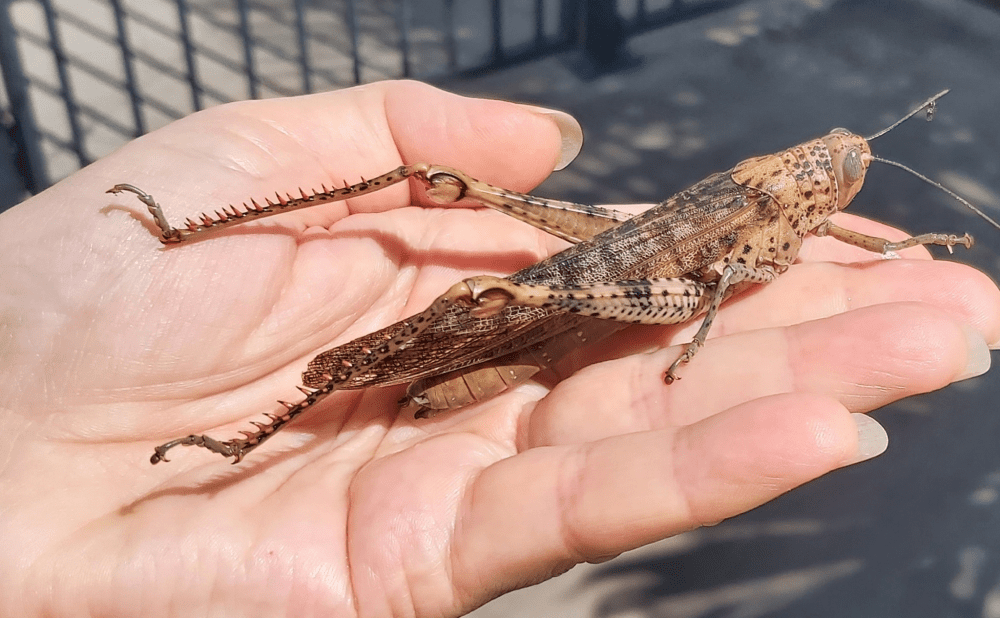In the pursuit of truth we must sometimes lift the curtain on “facts” we’d sooner have believed were true, such as the rumor that in the 1930s giant grasshoppers were hurling themselves around Montana. A black and white photo of a man holding his enormous catch gave rise to the myth, but unfortunately for fans of giant, meter-long insects, it’s just one in a string of novelty edited grasshopper postcards.
One reason we know the photo isn’t real is because of the simple giveaway that the giant grasshopper doesn’t have a shadow. While huge grasshoppers might seem like a strange thing to trend in the world of postcards, they were a huge hit back in the 1930s after photographer Frank D “Pop” Conard witnessed a swarm, writes the Kansas Historical Society.
“Hopper Whoppers”, as the genre became known, were retouched to look like they were pulling carts, holding up trains and fighting humans, but they were never real. Another reason why we can be certain of this links back to The Great Dying around 252 million years ago.
If you’re in the market for big insects, the largest ever to populate Earth was an absolute unit for a dragonfly, Meganeuropsis permiana. Its wingspan stretched to around 75 centimeters (30 inches) and it weighed around half a kilo (one pound), but alas, it also went extinct a few hundred million years ago.
It joined 90 percent of all terrestrial life in a mass extinction event triggered by a drop off in oxygen. This detail is a crucial one in understanding why, Jurassic World Dominion aside, you’re not going to find a meter-long grasshopper bouncing about in the wild.

Grasshoppers don’t have lungs and instead breathe through holes called spiracles that are found in a few spots across the length of their body. They’re spaced like this because they need to deliver oxygen directly to the localized tissues, as oxygen isn’t carried around insects’ bodies by blood like it is in mammals.
The bigger you are as an insect, the more space you need for these dead-end breathing tubes to reach all your girth, and eventually there becomes a size where this just isn’t possible. In prehistoric times Earth enjoyed Palaeozoic hyperoxia where the air was flush with oxygen, meaning insect giants could get enough of it to their lumbering body parts.
That all changed at the end of the Permian when oxygen levels plummeted from 30 percent to around 21 percent, leaving many species gasping for air (or spiracling for their lives, as it were). The oxygen dive that triggered The Great Dying was caused by global warming, and beyond clipping the wings of our dreams of giant grasshoppers, it’s also something to keep in mind if we don’t want to end up meeting a similar fate.
A third, and perhaps most convincing, reason for doubting the photos comes from a story in the Tomah Monitor Herald. The hoax story tells of the appearance of giant hoppers on an orchard belonging to a Mr Butts who was being knocked on his ass by the whopping great hoppers.
Pull the other one.
[H/T: Snopes]
Source Link: Did Giant Grasshoppers Jacked Up On Fertilizer Plague A Montana Orchard In 1937?